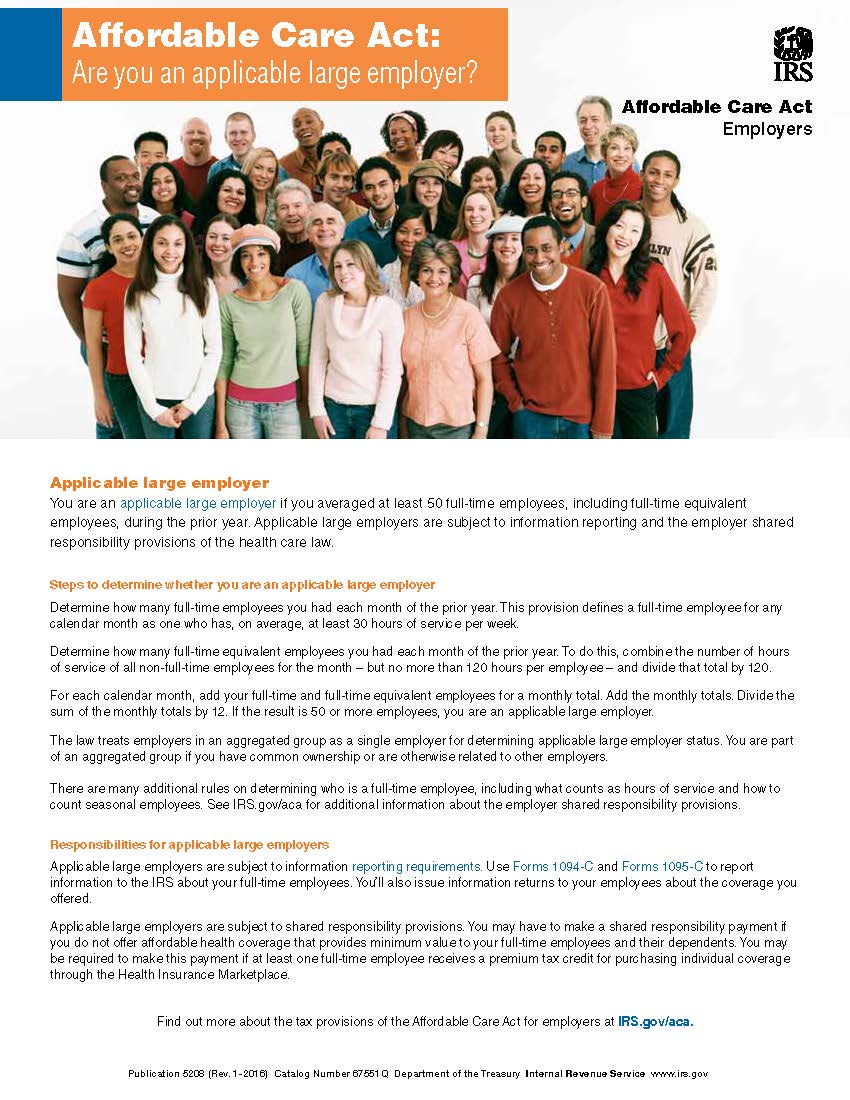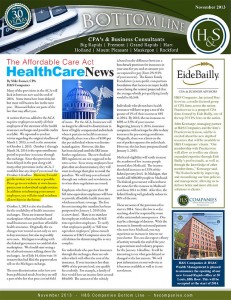Are you an applicable large employer?
With the Affordable Care Act there are certain requirements of you if you’re an applicable large employer. If you’re not sure, well, no fear, there are steps you can take to determine if you are one or not. Click the image below to download a helpful one-pager that the IRS has put together on this very topic. There are active links that take you directly to further information, should you need it!
As always, H&S Companies is here to guide you through the tax jungle. Please contact one of our many qualified CPAs or Accountants with any questions. Take a look at our locations pages to find someone near you.





 Because of changes enacted by the Affordable Health Care Act, health care coverage for an employee’s children, through age 26, is generally tax-free. Employees who are eligible to contribute to cafeteria plans are allowed to make pre-tax contributions to pay for this expanded benefit. The IRS considers a child to be one’s son, daughter, stepchild, adopted child, or eligible foster child.
Because of changes enacted by the Affordable Health Care Act, health care coverage for an employee’s children, through age 26, is generally tax-free. Employees who are eligible to contribute to cafeteria plans are allowed to make pre-tax contributions to pay for this expanded benefit. The IRS considers a child to be one’s son, daughter, stepchild, adopted child, or eligible foster child.